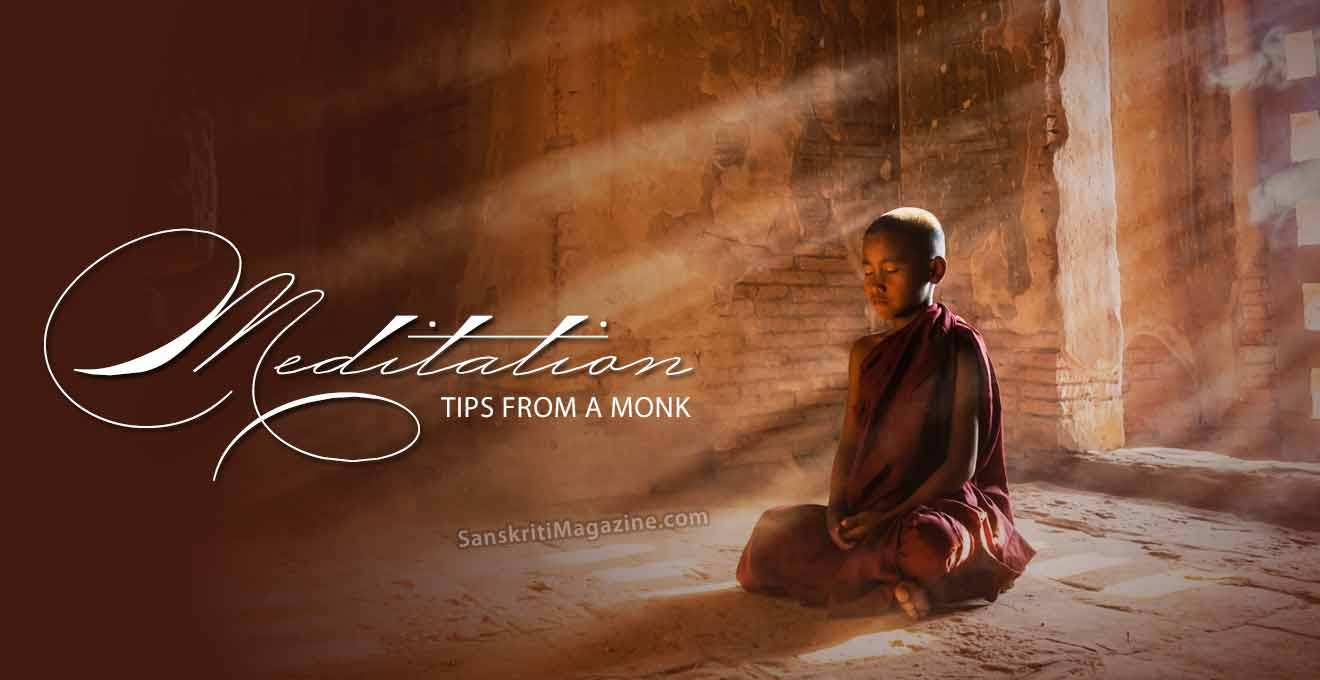Choose a time that works for you:
The time you choose should be comfortable for you, and should fit in with your daily schedule and the schedule of others.
Ideally, the better times for meditation are early morning or late evening. The ancient teachers of yoga meditation say that the ideal time is about 3:00 or 4:00 am. The times just around sunrise and sunset are also particularly nice for meditation.
Although such times may be theoretically better than other times, they may not be right for you personally if they do not match your schedule, your current predisposition for meditation, or the people with whom you live. The real key to regularity of meditation is to choose a time that works for you.
It is also nice to think of time in the context of activities. For example, in the morning you may find your meditation is best after bathing, but before taking your breakfast. Having it programmed in your mind that this is the sequence in which you do your morning activities and practice will go a long way towards developing a good habit.
On the other hand, there may be something about your household schedule which alters the ideal situation. For example, you may know that it is better to bathe before meditation, but you may find you are too disturbed by the sounds of others in the house after your bathing time. You may decide to sit for meditation first, while others are bathing, and that this is a quieter time for you.
These are only examples–What is important in selecting a time is that you experiment with it, finding out what works just right for you. So-called rules about sitting times are useless if by trying to follow the rules you end up not sitting at all.
Choose how many times per day to sit:
It is also most useful to make a decision as to how many times you will meditate per day, whether one, two, three, or more. It is very useful to make a solid decision on this point. Then allow yourself the flexibility of altering the duration of your practice.
For example, you may like to sit for 30 minutes just after you come home from your daily work. What do you do on a day where there is not this much time? Better that you sit for only one minute, or sit long enough to count five breaths, than to not do the practice at all. It is amazing how even a very brief time can be of use in the moment, as well as in habit formation.
If you must miss your scheduled meditation:
There are stories of people committed to yoga meditation and how they sit at all cost, even life and death situations. Such stories are supposed to inspire us. This is a nice goal, but for many people this can be a setup for failure in your meditation, as you may not be yet able to muster that much determination. It seems best for most people to cultivate a sincere attitude of commitment to specific times, but then be a little flexible in life situations.
If you must miss a meditation time, do not just change the meditation time that day. This is admittedly a mind game, but you will find it very useful to take a stance that this is still my meditation time, but that this time I will not be making my appointment. This way you are not changing your meditation time. The date or appointment remains fixed, absolutely fixed, but you are missing it this time out of choice. Then, at the time of your meditation, turn your attention inward, even for a moment, and remember–just remember. Then, do your meditation at a later time the same day.
When you’re too tired at the end of the day:
The end of a very long day can be a tempting time to skip meditation, just for this one day. The one day turns into many days. Better that you train yourself to sit for one minute, or a count of 10 breaths, or for that matter, even 3 breaths, or 1. Whatever you do, that act of sitting just for a moment will affirm your intent to be inward for meditation. It will have an effect on habit development.
Use the same place:
Using the same place for meditation each day is an important part of developing a good habit. Then the mind does not have to question, or scan around the house or room, wondering where to go today.
This one space will also become a point of reference for you in daily life. If it is in your bedroom, for example, it should be one specific spot. It may be a space on the floor where you leave your cushion, or it may be a specific chair that is kept uncluttered and is only for meditation. You will notice for yourself that from time to time your attention will go to that space during the day, as if you are remembering that this special place is there for you, and that you will be returning there soon for a quiet, joy-filled inner journey.
Where you will not be disturbed:
Your place of yoga meditation should be somewhere in the house where you are not in the traffic pattern of other people. It is better that the meditator work around other people than that the other people have to change their lives for the benefit of your practice. It is, of course, very nice when people can work together in a family (or workplace) so as to provide quiet space and time for one another.
For only this purpose:
Choose a space that, as best as possible, is not used for some other purpose. Somewhere in your house is a quiet space that you do not otherwise visit so often.
It may be, for example a particular space along a particular wall in your bedroom that you normally have no other need to go to. If you look with a keen eye, you will easily spot many such places. Then, allow yourself to use that space only for the purpose of meditation. Here, we are talking about this small space, not the whole room. You may want to leave your cushion in that spot, or if you use a chair, then that chair is left only for that purpose, not as a collecting place for clothes or other objects.
Quiet, pleasant, comfortable:
Your space should be quiet, pleasant, and comfortable. While it should be a nice space, it is better to not become rigid about this. A yogi should have some degree of flexibility in what defines comfort, pleasant, and quiet.
Comfort should be reasonable. Pleasant should be simple, and not overly stimulating to the senses.
A meditator knows that it is not sounds which disturb meditation, but our reaction to that sound. So it needs to be reasonably quiet, not absolutely quiet.
Not on your bed:
There can be a real temptation to do meditation on the bed in which you normally sleep. This can create a bad habit, as it is in the nature of mind to make associations. Meditating on the bed can create a confusion in the unconscious mind whereby sitting for meditation becomes associated with sleep. Better to have a separate space on the floor or on a chair to do your yoga meditation.
~ by Swami Jnaneshvara Bharati










